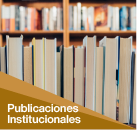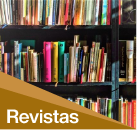El territorio sagrado y la escuela: los Apus en la escuela primaria
Fecha
2023-12-07Autor
Arones Huaman, Bil Fredy
Quispicusi Huamani, Ruth Mery
Nivel de Acceso
Acceso AbiertoMetadatos
Mostrar el registro completo del ítemResumen
El presente trabajo surge por el interés de reflexionar sobre el territorio sagrado y sobre la importancia de los Apus (cerros sagrados) en la escuela primaria. Para el mundo andino, el territorio es visto como sagrado y vivo. Esta idea no es usual para los maestros, por eso, nos interesa revisar la bibliografía sobre la EIB, el territorio sagrado y los Apus para hacer conocer a otros maestros sobre algunas costumbres ancestrales y entender el territorio desde otra mirada. La investigación revisa información acerca de la EIB en el Perú como modalidad educativa interesante para trabajar los saberes ancestrales y especialmente sobre los Apus, ya que la sabiduría fue transmitida oralmente por los abuelos. Consideramos que las narraciones sobre las costumbres de los pueblos ayudan mucho a los niños a aprender sobre su territorio y proporcionar un contexto real para reflexionar, conocer sus costumbres y de otros pueblos. Asimismo, difundir estos conocimientos como un material que ayude a los maestros para que trabajen y valoren los saberes ancestrales con sus estudiantes. Consideramos que este trabajo puede ayudar a otros docentes a acercarse a la cultura andina. Abstract The present investigation arises from the interest of reflecting on the sacred territory and on the importance of the Apus (sacred hills) in primary school. For the Andean world, the territory is seen as sacred and alive; This idea is not common for teachers, so we are interested in reviewing the bibliography on the EIB, the sacred territory and the Apus to make other teachers know about some ancestral customs and understand the territory from another perspective. The research reviews information about bilingual intercultural education in Peru as an interesting educational modality to work on ancestral knowledge about the Apus, since the wisdom was transmitted orally by the grandparents. We believe that the stories about the customs of the towns help children a lot to learn and provide a real context to reflect, learn about the customs of other towns. Also disseminate this knowledge as a material that helps teachers to work with their students. We believe that this work can help other teachers to have an overview, to be open, to get closer to the Andean culture. Keywords: Intercultural education, ancestral knowledge, sacred territory, Apus. Pisi Rimayllapi Kay investigacionqa paqarinmi sagrado territoriopi yuyaymanaymanta, chaynallataq Apus (sagrado urqukuna) primariapi ancha allin kasqanmanta. Andino pachapaqqa, chay territoriuqa sagrado hinallataq kawsaq hina qhawarisqa; Kay yuyayqa manam yachachiqkunapaqqa cumunchu, chaymi EIB, sagrado territorio hinaspa Apu nisqamanta bibliografía nisqa qawariyta munayku, huk yachachiqkuna wakin ñawpa costumbrikunamanta yachanankupaq, territoriuta huk qawariymanta hamutanankupaq. Kay investigacionqa Perú suyupi iskay simipi Educación Intercultural nisqamanta willakuykunata qhawarin, huk sumaq modalidad educativa hina, Apumanta ñawpaq yachaykunapi llamk’anapaq, chay yachayqa hatun tayta mamakuna simiwan apachisqa kasqanrayku. Iñiyku llaqtakunapa costumbrinmanta willakuykunaqa warmakunatam anchata yanapan yachanankupaq hinaspa chiqap contextuta qun yuyaymananankupaq, huk llaqtakunapa costumbrinmanta yachanankupaq. Hinallatak kay yachaykunata mastariy, yachachikkunata yachakukkunawan llankachun yanapak material hina. Iñiyku kay llamk´ayqa huk yachachiqkunata yanapanman huk qawariyniyuq kanankupaq, kichasqa kanankupaq, cultura andina nisqaman asuykunankupaq. Chanin rimaykuna: Educación intercultural nisqa, ñawpa yachay, wilka pacha, Apukuna.







